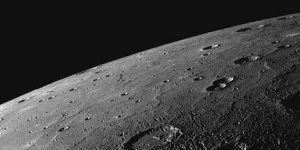| News / Science News |
Defending against environmental stressors may shorten lifespan
A shorter life may be the price an organism pays for coping with the natural assaults of daily living.

The binding of GBP to Mthl10 promotes inflammation, which decreases the lifespan of a fruit fly. In contrast, the removal of GBP’s binding partner Mthl10, produces less inflammation and increases the lifespan of the fly. Image credit: NIEHS
The scientists used fruit flies to examine the relationship between lifespan and signaling proteins that defend the body against environmental stressors, such as bacterial infections and cold temperatures. Since flies and mammals share some of the same molecular pathways, the work may demonstrate how the environment affects longevity in humans.
The research identified Methuselah-like receptor-10 (Mthl10), a protein that moderates how flies respond to inflammation.
The finding provides evidence for one theory of aging, which suggests longevity depends on a delicate balance between proinflammatory proteins, thought to promote aging, and anti-inflammatory proteins, believed to prolong life. These inflammatory factors are influenced by what an organism experiences in its every day environment.
Mthl10 appears on the surface of insect cells and acts as the binding partner to a signaling molecule known as growth-blocking peptide (GBP). Once Mthl10 and GBP connect, they initiate the production of proinflammatory proteins, which, in turn, shortens the fly’s life.
However, removing the Mthl10 gene makes the flies unable to produce Mthl10 protein and prevents the binding of GBP to cells. As a result, the flies experienced low levels of inflammation and longer lifespans.
Fruit flies without Mthl10 live up to 25 percent longer," Shears said. "But, they exhibit higher death rates when exposed to environmental stressors.
The research reveals that the ability of a young organism to defend against repeated environmental stress may be an empty victory, because the animal may not live as long.
The human counterpart to GBP is a protein called defensin BD2, but the nature of its binding partner is currently unknown. It is not always possible for humans to prevent illness and environmental stress from influencing the level of inflammation they experience.
Another part of the fruit fly study shows that avoiding excess calorie intake, basically not over-indulging in too much carbohydrate and fat, may reduce levels of proinflammatory proteins. (National Institutes of Health)
YOU MAY ALSO LIKE





